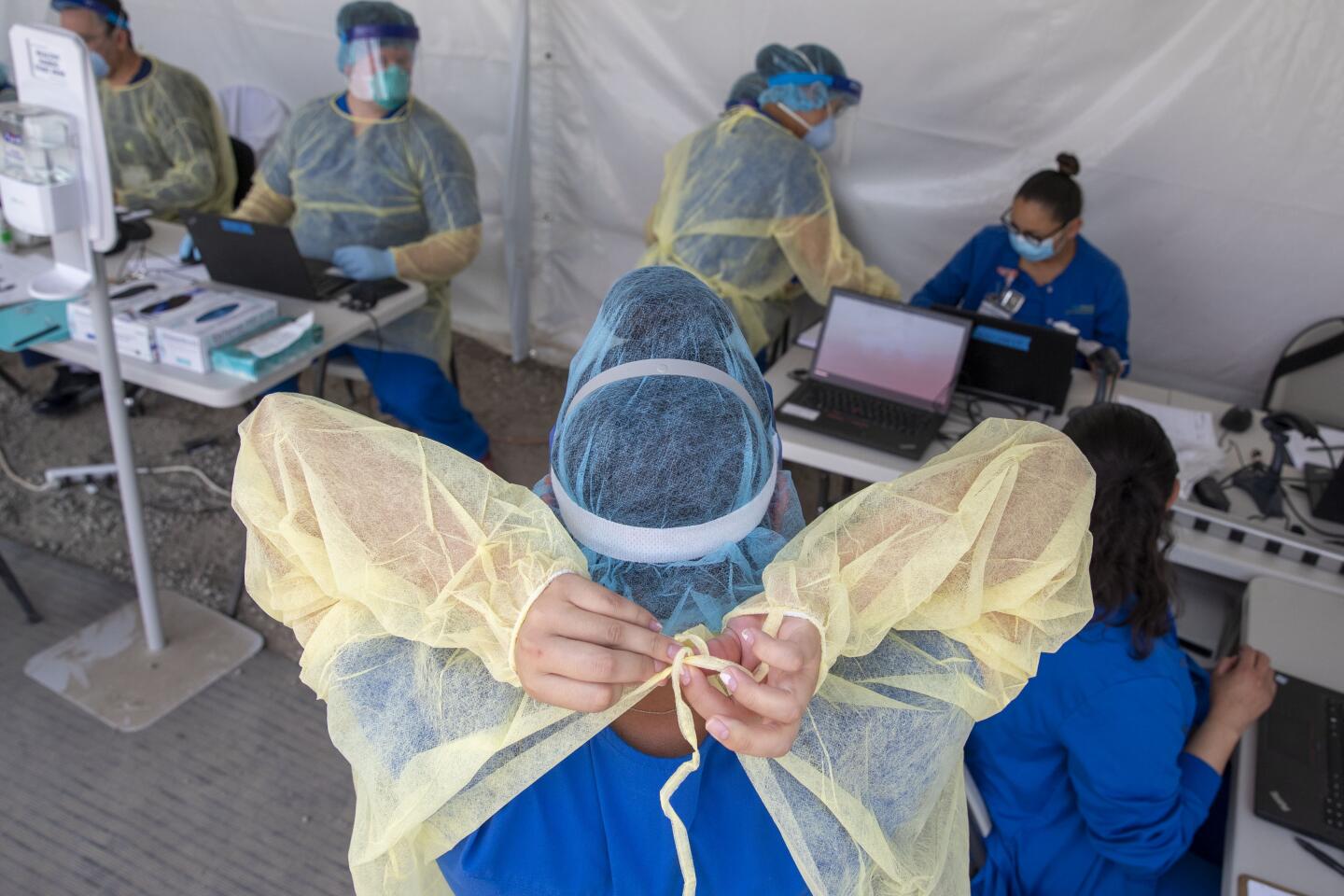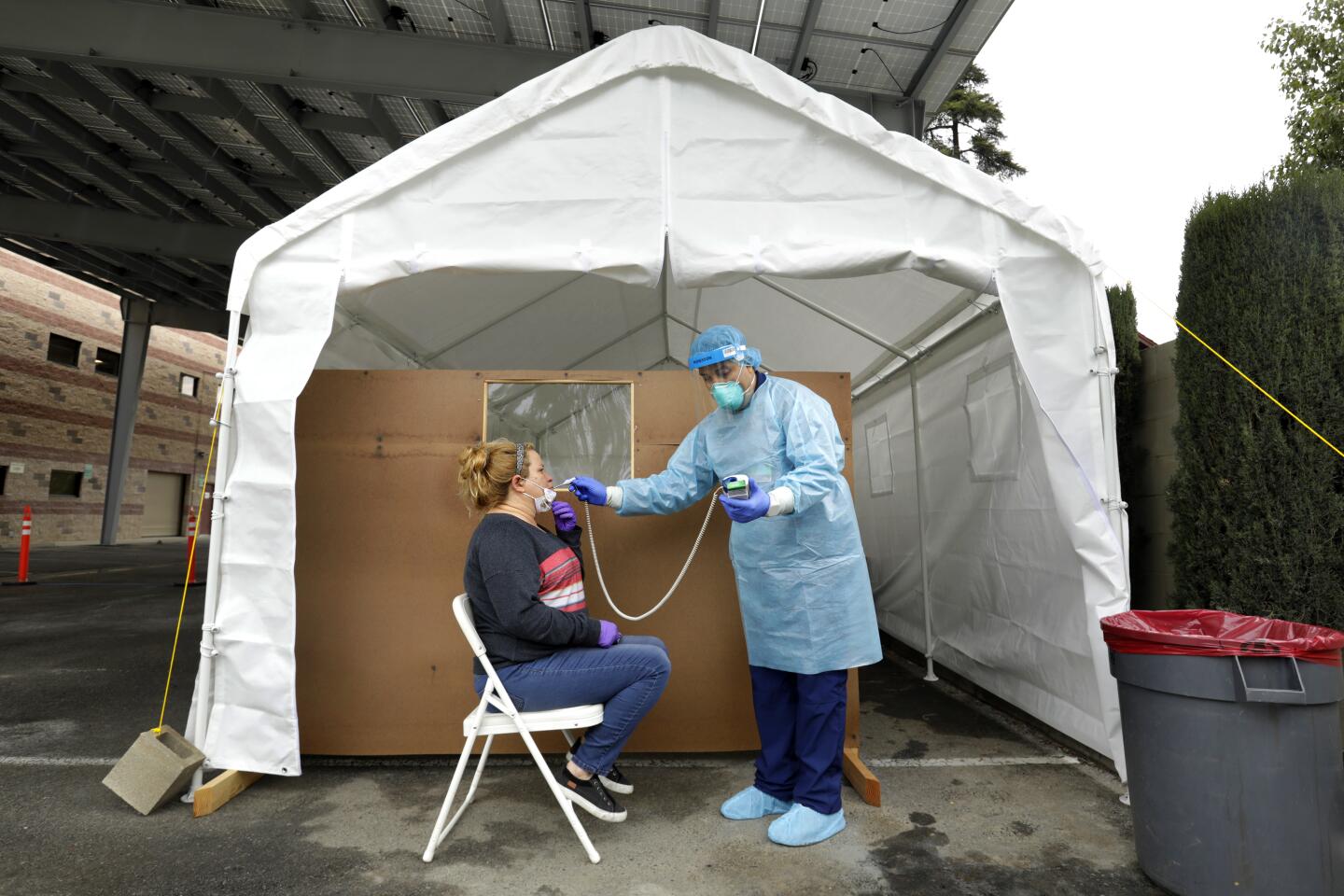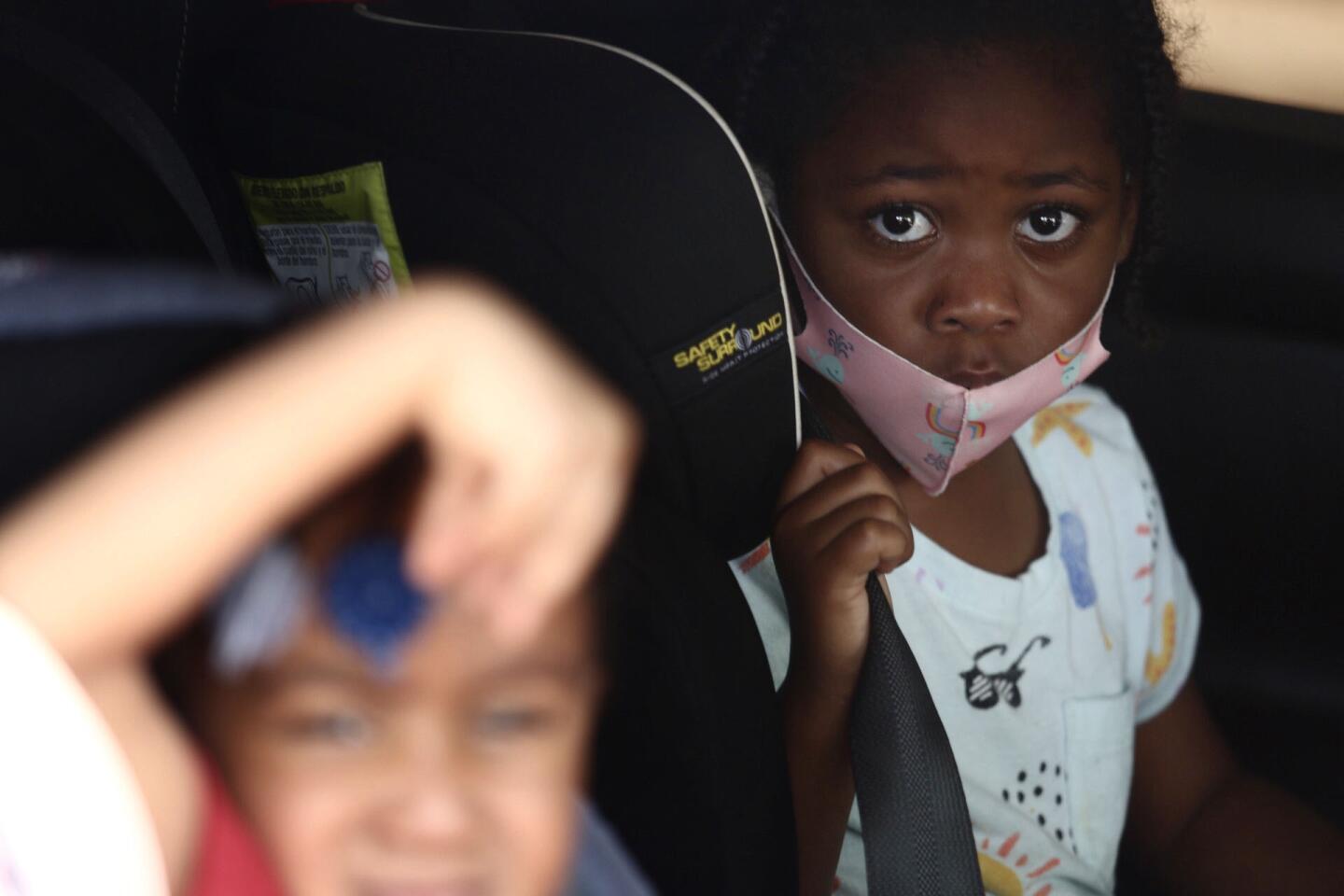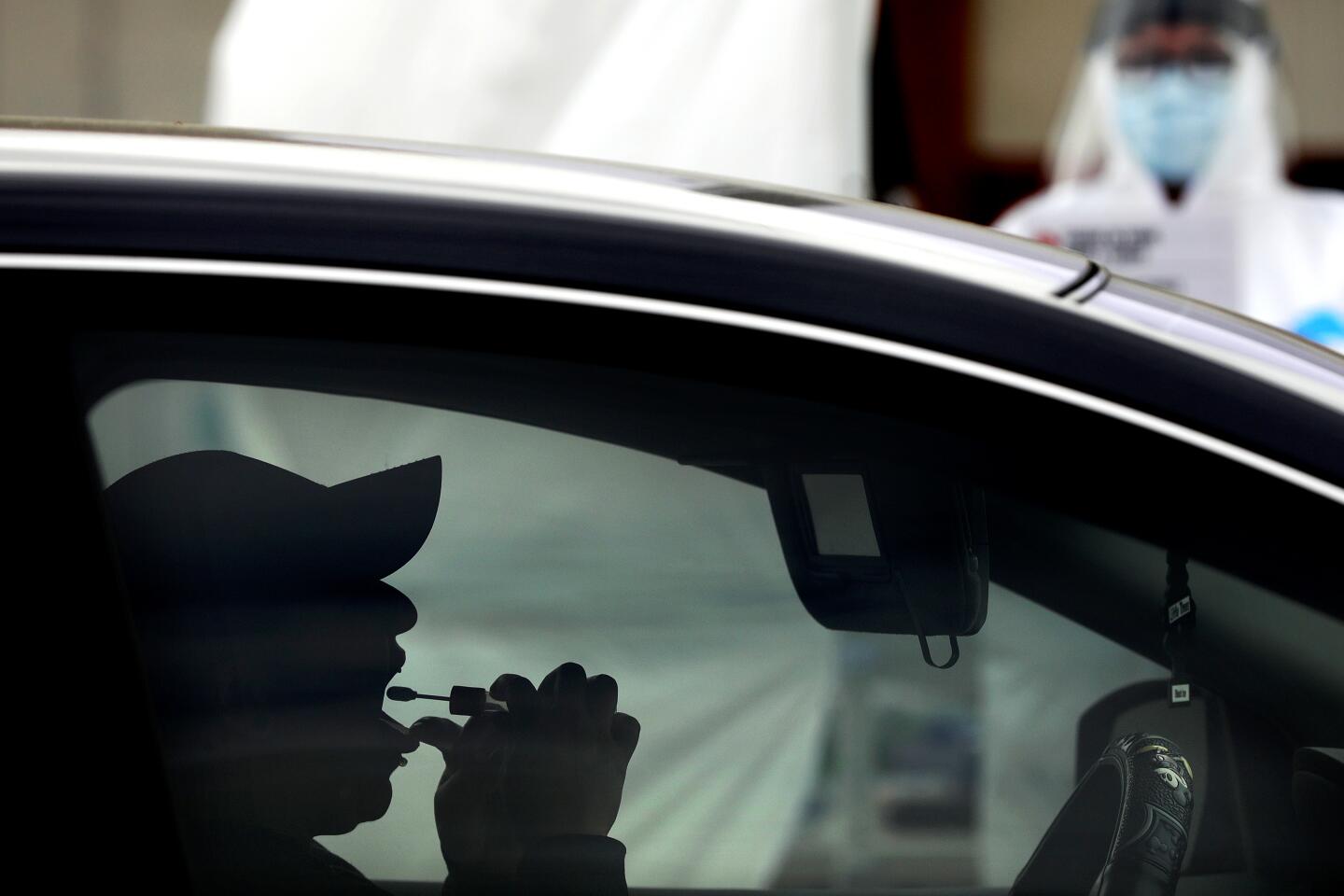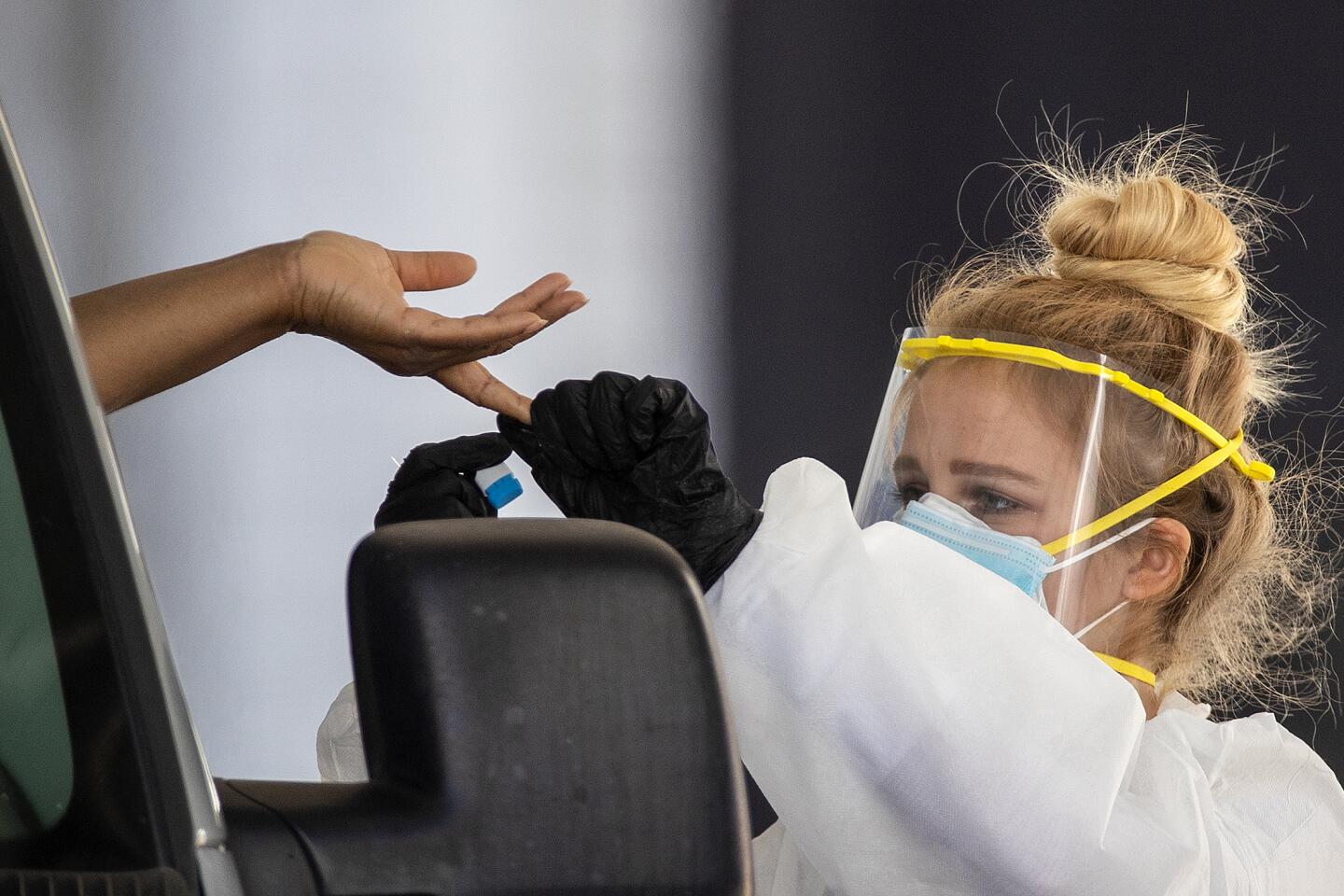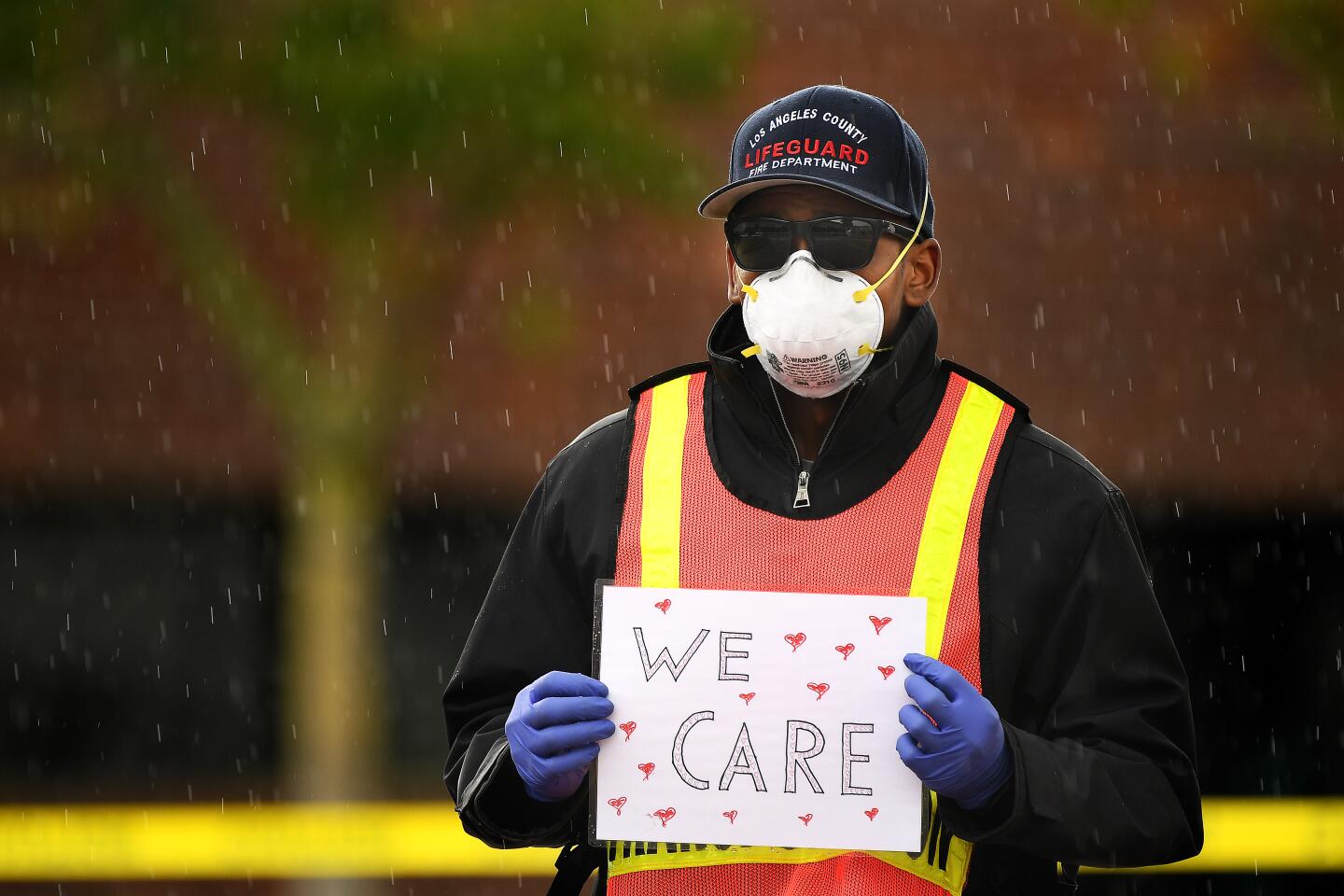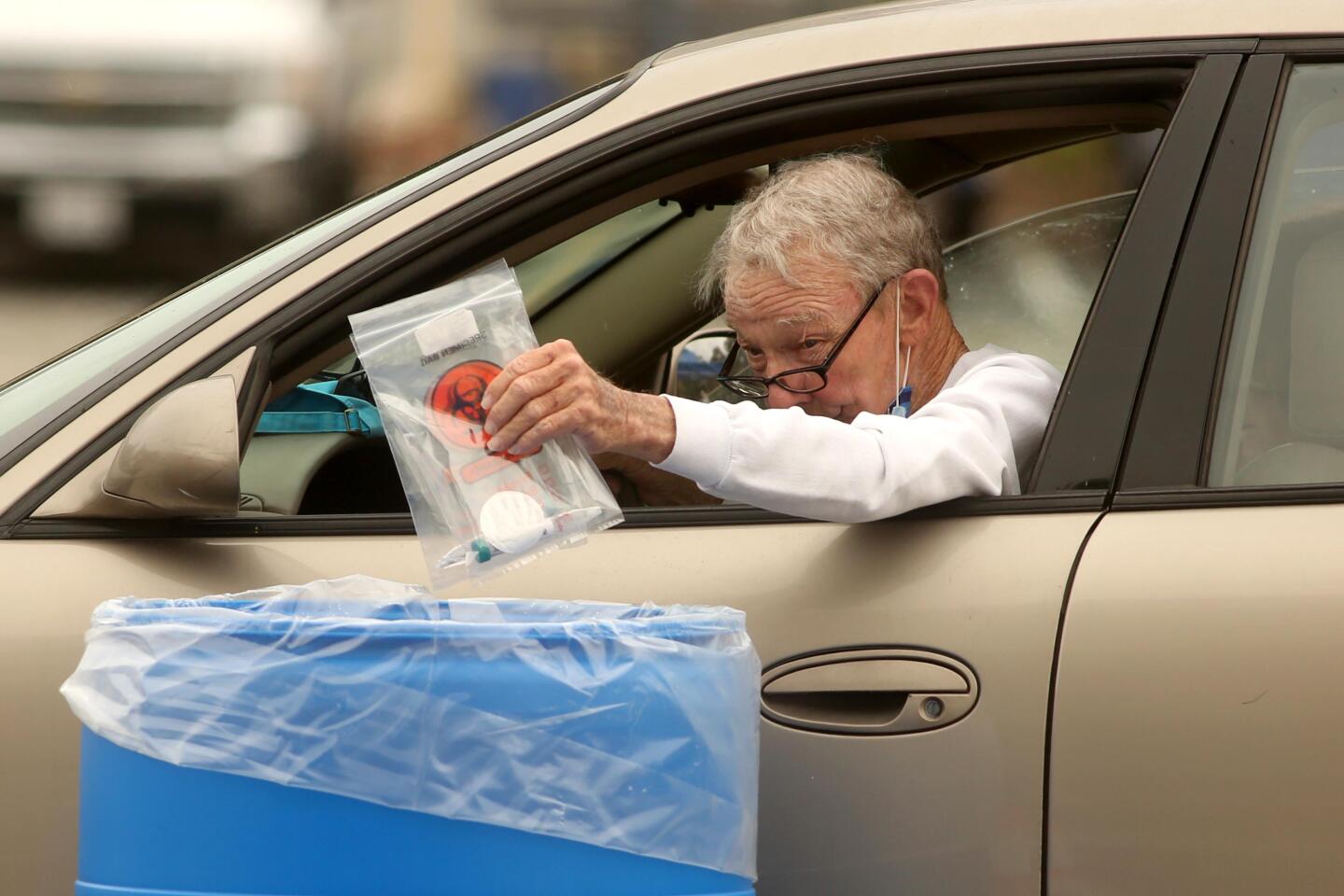Record high of new coronavirus cases reported in California: More than 6,000 in a day
- Share via
California shattered a daily record for new coronavirus cases with more than 6,000 infections reported Monday — the largest single-day count in the state since the pandemic hit the U.S.
In Los Angeles County, officials on Tuesday reported more than 2,000 new cases for the fourth time in the last week, bringing the total number of infections to more than 88,200. Officials also reported 34 additional deaths, increasing the death toll to 3,171 — the bulk of the state’s total.
In San Diego County, officials reported more than 300 new cases for the second day in a row after breaking a record with more than 310 cases Sunday.
The case count is only one metric in tracking the spread of the virus, and, while increased testing capacity may account for part of the increase, officials have said the surge cannot be pegged to testing alone.
Officials have repeatedly warned that they expect transmission rates to increase as more businesses reopen and people resume normal activities after months-long stay-at-home orders.
L.A. County Public Health Director Barbara Ferrer has said that while it is impossible to track the origin of spread in a public setting, it is “highly likely” that the overall increase is related to mass protests that erupted over the death of George Floyd as well as clusters of social gatherings at restaurants and private parties.
As hospitalizations rise in California, officials battle a social summer
In Riverside County, which has the second-highest number of cases in the state, public health officials have reported 4,001 new cases in 14 days. Although the metric fails to meet Gov. Gavin Newsom’s standard for reopening, the county voted last month to approve a “Readiness and Reopening Framework” that outlines alternative benchmarks toward reopening.
Officials announced Monday that they will randomly select about 3,500 Riverside County residents for an antibody study to determine whether they’ve been exposed to the virus. The study will help the county’s planning efforts for reopening.
“We are asking those who are contacted to strongly consider taking part in the study,” said Kim Saruwatari, the county’s public health director. “It’s important to know the extent of the spread of the virus [and how many] have developed antibodies. That information is vital as we move forward.
Across the state, the positivity rate among those tested for coronavirus increased from 4.5% to 4.8% in the last week, and the number of hospitalizations jumped by 16%.
In L.A. County, the daily positivity rate over a seven-day average jumped to 8.8%. Officials reported Tuesday there are 1,515 people hospitalized, 27% in intensive care. While that number is a far cry from the highs of 1,900 patients in past months, it is higher than the daily hospitalization counts of 1,350 to 1,450 in the past few weeks.
Despite the uptick in cases, more cities and counties are continuing to expand their reopening plans.
In San Francisco, Mayor London Breed and Health Director Dr. Grant Colfax announced this week that the city would move up its next phase of reopening from mid-July to June 29. Hair and nail salons, barbershops, museums, zoos, tattoo parlors, massage establishments and outdoor bars will be able to reopen, provided they follow safety protocols.
“Thanks to San Franciscans’ efforts to follow health requirements, wear face coverings and practice social distancing, our COVID-19 health indicators are in a good place, and we can continue reopening our city,” Breed said. “We know a lot of businesses and residents are struggling financially, and this next step will help get more San Franciscans back to work while still balancing safety.”
Newsom said state health officials are keeping a close eye on the numbers, adding that he felt confident the state would be able to respond to the virus in the weeks and months ahead.
“We’ve always walked into this with our eyes wide open. We’ve always prepared for a surge,” the governor said. “We’re in that band, where I feel like we anticipated the likelihood as we’ve reopened, of the numbers increasing, and they have.”
However, he said it’s possible for the state to reverse course if case counts continue to climb.
“We are prepared to do that, if we must,” he said.
Health officials say the total in new cases is not the best measure of community spread because of aggressive levels of new testing. They point to other metrics they say shows that the local outbreak has stabilized.
Newsom repeated a plea for people to wear face coverings, which is now a statewide mandate, and to report businesses and restaurants that are not following safety protocols.
“When you go to a restaurant and it’s clear that they’re not practicing what we are preaching, report them. Give us the tools to enforce,” he said.
Last week, L.A. County officials said that roughly 1,000 restaurants were found to be violating regulations for reopening, with tables placed too closely together.
The state is currently monitoring 10 counties — Fresno, Imperial, Kings, Los Angeles, Riverside, San Bernardino, San Joaquin, Santa Barbara, Stanislaus and Tulare — for surges in coronavirus cases and hospitalizations.
In L.A. County, Director of Health Services Dr. Christina Ghaly said Monday that, while the county currently has enough available hospital beds, the number of intensive care units may become limited in coming weeks if COVID-19 patients have to compete for space with other patients. Officials are closely monitoring those numbers.
Additionally, officials estimate that about 1 in 400 Angelenos may be sick without knowing it as so-called asymptomatic spread remains a risk.
“Angelenos over the course of a typical day are likely going to interact with individuals who are infectious,” Ghaly said. “These people might not seem sick.”
Times staff writer Taryn Luna contributed to this report.
More to Read
Sign up for Essential California
The most important California stories and recommendations in your inbox every morning.
You may occasionally receive promotional content from the Los Angeles Times.



